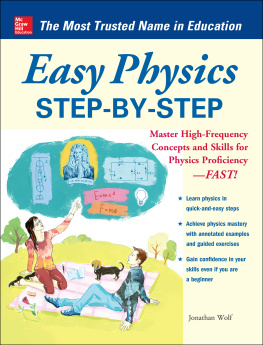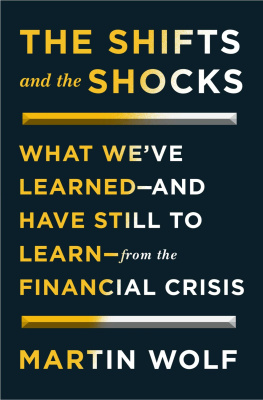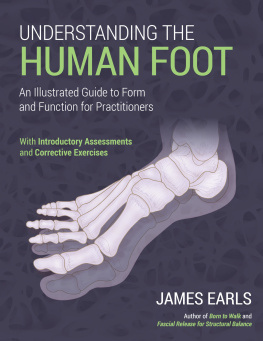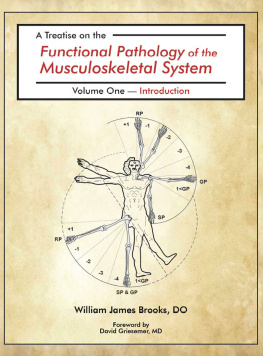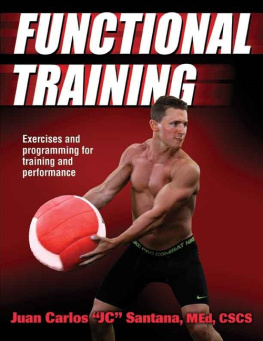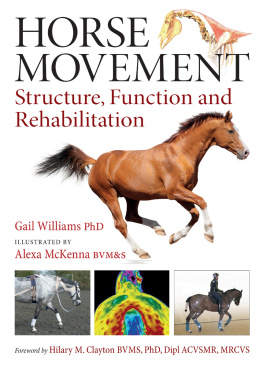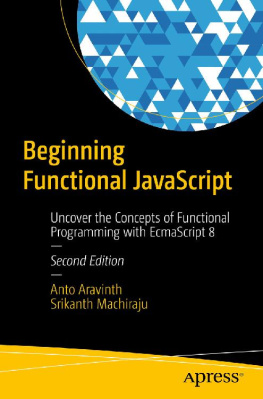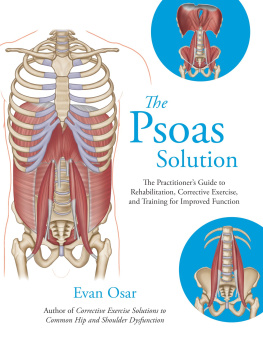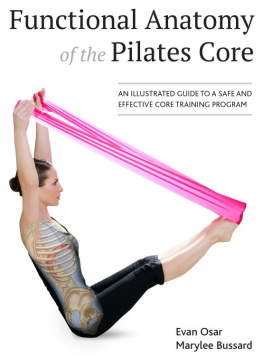INSIGHTS INTO FUNCTIONAL TRAINING
PRINCIPLES, CONCEPTS, AND APPLICATION
Chuck Wolf, MS, FAFS
Foreword by Robert Masson, MD
On Target Publications
Santa Cruz, California
Insights into Functional Training
Principles, Concepts, and Application
Chuck Wolf
Foreword by Robert Masson, MD
Chuck Wolf photographs by Charlie Fee, Sideline Photography
Illustrations by Jessica Simms, unless otherwise noted
Chapter Three anatomy photos Mark Nielsen and Shawn Miller. Used with permission.
Copyright 2017 Chuck Wolf
Foreword 2017 Robert Masson
ISBN-13: 978-1-931046-83-1; 978-1-931046-82-3 epub
First printing September 2017
All rights reserved. Printed in the United States of America using recycled paper. No part of this book may be reproduced or transmitted in any form whatsoever without written permission from the author or publisher, with the exception of the inclusions of brief quotations in articles or reviews.
On Target Publications
P O Box 1335 Aptos, California 95001 USA
otpbooks.com
Library of Congress Cataloging-in-Publication Data
Names: Wolf, Chuck, 1953- author.Title: Insights into functional training : principles, concepts and application / Chuck Wolf, MS, FAFS ; foreword by Robert Masson, MD.Description: Santa Cruz, CA : On Target Publications, [2017] | Includes index.Identifiers: LCCN 2017001349 | ISBN 9781931046831 (pbk.)Subjects: LCSH: Kinesiology. | Human mechanics.Classification: LCC QP303 .W65 2017 | DDC 612.7/6--dc23
LC record available at https://lccn.loc.gov/2017001349
CONTENTS
Chapter One
Chapter Two
Chapter Three
Chapter Four
Chapter Five
Chapter Six
Chapter Seven
Chapter Eight
Chapter Nine
Chapter Ten
Chapter Eleven
Chapter Twelve
Chapter Thirteen
Appendix One
Appendix Two
Appendix Three
Appendix Four
Appendix Five
Lord Alfred Tennyson from Ulysses
Tho much is taken, much abides; and tho
We are not now that strength which in old days
Moved earth and heaven, that which we are, we are;
One equal temper of heroic hearts,
Made weak by time and fate, but strong in will
To strive, to seek, to find, and not to yield.
FOREWORD
Chuck Wolf continues to do amazing work in understanding the limits of human performance while emphasizing injury prevention, biomechanics, and a philosophy that proudly proclaims that the sum of human performance is bigger than the individual components.
I have worked with Chuck for years and he has taught me that the limits to the recovery capabilities of my micro-reconstruction patients lay in the foundation of their total performance. I am always reminded that the better my surgical procedures solve intervertebral joint dysfunction and with less trauma, the more the limits of human recovery are tested.
His time-tested, simple, and honest evaluation and performance principles, continue to lead the way toward a better understanding of human performance both before and after injury. His thoughtful and meaningful concepts have given me a broader and bolder understanding of the value of less traumatic surgical techniques and have given countless patients the optimization of recovery that previously was not possible in the field of complex spinal reconstruction and orthopedics at large.
I strongly recommend the journey of better understanding the mission and concepts presented here as you start your own quest to chase successful wellness and recovery strategies for your clients and patients as they seek to maximize their own version of human performance.
ROBERT MASSON, MD
PRESIDENT, NEUROSPINE INSTITUTE
ORLANDO, FLORIDA
PREFACE
The whole is greater than the sum of its parts.
~ ARISTOTLE
Professionals in fitness, physical therapy, and sports performance you are enactments of the balance of nature as we attempt to create environments for the body, spirit, and soul. Whether the enactment is from a position to promote freedom from illness or injury, to promote the healing process from injured tissue, or attempting to facilitate the highest level of performance, you are attempting to create the environment for optimal health and wellbeing.
Creating the environment for human success is based on concepts derived from the scientific principles to promote improved functional outcomes. The term concept is defined as a plan or intention, a thought process based on the general principles or truths that exist.
Writing this book has been a process of taking complex principles and transitioning them into a simpler concept to promote improved function.
There are many perspectives to bring about improved health and wellbeing. Some do extremely well, while others are highly scrutinized. They can all become tools in a deep toolbox when based on the principles of movement.
In this book, I do not promote or criticize any approaches to corrective exercise, sports performance, or rehabilitative strategies. We will instead discuss the principles of movement that can help as a tool to enhance the health of the human body.
My intention is to discuss complex principles, while writing in a way that is easy to comprehend. As a result, you will be able to apply the information to produce positive outcomes to promote wellness, improved performance, and enrichment to the human ecosystem.
This book is organized in a progressive fashion. First, we discuss the principles and characteristics of efficient human movement. We will then delve into the joint-by-joint approach to movement within a three-dimensional environment.
The chapter on functional anatomy is not similar to a traditional anatomy textbook. Instead, we will cover the most common myofascial tissue trainers, physical therapists, and sports coaches discuss. The approach compares the anatomical anatomy to functional anatomy . It is to be used as a quick reference to view the three-dimensional action of these muscles.
Flexibility Highways has been a deep passion of mine for the last 20 years. The six Flexibility Highways described in Chapter Five involve the six cardinal pathways in which I view movement. These movement pathways relate to the fascial connections that involve the tissues forming an integrated relationship within those fascial lines.
The chapter Blending Tradition with Functional Integrated Training is where my strategies blend movement principles into conceptual applications.
Exercise and movement strategies are an art based on science determined by the limitations, compensations, and idiosyncrasies of those we serve. The programming chapters are really a hybrid of not only the giants in the fitness, rehabilitation, and sporting worlds, but also include a blend of concepts from my years of practice.
The impetus for this book lies in the chapter called Pre-programming Insights. I have been blessed to work with thousands of clients and patients throughout my career. Many times, I felt they were my living labs who allowed me to try applications of techniques. I wish I could say all were successful; however, that is not the case.
Success is not only derived from positive outcomes, but also from the lessons learned from conceptual applications that were not effective. I was able to learn from those less-than-effective moments and have built that education into the book you are about to read.





